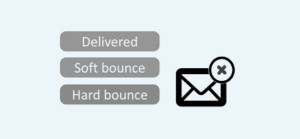The role of spam traps is to discover and keep track of spam email. They are mostly used by Internet Service Providers (ISPs) and anti-spam organizations to entice unsuspecting spammers, hence the name ‘honeypots.’
What is a spam-trap? A spam trap is a real email address, but it does not belong to a real person and its purpose is not to be used for any kind of communication. Its only goal is to detect spammers and senders not using proper list hygiene (like those who send emails to harvested or purchased lists).
Although spam traps are meant for spammers, legitimate, harmless senders may fall prey. Once you have a spam trap on your contact list, your IP address or domain may be blacklisted. This, in turn, depletes your sending reputation and impairs your email deliverability.
This article will discuss spam traps in detail, with practical tips on how to stop their infusion into your contacts list.
Types of Spam Traps
Recycled Spam Trap
Recycled spam traps comprise email addresses or domain registrations that have lost their validity and subsequently rerouted to trap spams. Examples include the email address of former employees of a company, as well as role addresses like support@, info@, and sales@, among others. Although they are relatively mild in their actions, they may still deplete the sending reputation over time.
Pristine Spam Trap
Pristine spam traps comprise new, unused emails, usually created by ISPs and other organizations. You are probably wondering how they find their way into your contact list if they have never been used. Well, here is how.
It is common for scammers to scrape websites for emails to grow their lists. And when they do this, they scrape the spam trap email addresses along with other emails and add them to their contact list. You may also find pristine spam traps on rented and purchased contact lists.
Sending to a pristine spam trap triggers ISPs, who, in turn, flags such sender as exploring illegitimate methods of contact building. The pristine spam traps are the most severe spam traps out there. They do not only deplete sending reputation rapidly but also blacklist your IP address or domain.
Email Containing Typos
Another form of spam traps are emails containing common typos. For example, if an email writes “yahoo” as “yaho” or “gmail” as “gnail.” While these may be apparent mistakes on the part of the person signing up, they may end up as a spam trap on your list. Compared to other spam traps, typo spam traps are less severe. However, the sender’s reputation is on the line, due to their failure to assess and clear their contact list.
Prevention Strategies for Spam Traps
The chief culprit of spam traps is poor email list management and maintenance. So, the simplest way to prevent them is to keep your contact list healthy and adopt the following best practices:
Avoid List Contamination
The deliberate or unintentional addition of a spam trap disguising as an email address is added to an unconfirmed list is termed list contamination. The best way to avoid this is to double-check the email addresses on your list for spelling inconsistencies. Ensure that your signup forms include an email validation procedure that verifies the validity of an email address and filter out typos.
Another important procedure to incorporate is the double opt-in for your subscribers, which forces subscribers to confirm their email address before they can receive emails from you. What a double opt-in does is to double-check the decision of your prospective recipient to receive your emails, while ensuring that you only have legitimate senders on your list.
Outdated Emails
You can also prevent spam traps by retaining only subscribers that engage with your content regularly on your list. Spam traps mostly come from outdated or invalid email addresses. If you fail to send an email to an address for an extended period, such an address may be caught in a spam trap. Likewise, sending an email to an address that has not opened any of your past emails in a very long time can get you caught in a spam trap.
If there are subscribers who have not engaged with your content over the past few months, send them re-engagement campaigns instead of the conventional emails. If the engagement does not improve, remove such subscribers altogether from your list.
Purchased Lists
As tempting as purchasing a list may be, it is best to avoid them at all costs. A purchased list and spam traps are inseparable. You are also at the risk of engaging recipients that have no interest in your brand or offers, who will most likely mark your emails as spam or delete them altogether. These practices will ultimately deplete your sender reputation.
Identifying a Spam Trap on Your List
Start by checking if your IP address and domain name have been blocked (or not), with the aid of a reputable Email Blacklist checker, such as MXToolBox. Blacklisted IPs and domain mean you probably have a spam trap on your list.
Also, watch out for the delivery rates. If the delivery rates reduce continuously, it is an indicator of the presence of a spam trap. You can do a more comprehensive assessment of your contact list using tools like 250ok Reputation, to reveal the presence of spam traps, the type, and the number.
Getting Rid of a Spam Trap
Having spam traps on your list is not the end of the world. It simply means that your list is due for an extensive decluttering and cleaning. Get rid of contacts with zero engagement over the last three or six months.
If this does not solve the problem, proceed to implement list segmentation, where you segment the clean sections of your list from the other parts of the list. Re-segment these clean segments until you can fish out the spam trap. It is advisable to get your email list verified to ensure a zero chance of a hard bounce. Once your email list is clean, you can worry less about hard bounce, considering that all your prospective recipients exist and are valid.
Apart from being a good marketing practice, sending emails to only valid addresses keeps your deliverability rate very high. Use the email verification service to discover invalid email addresses.
Summary
As mentioned earlier, a spam trap is designed for fishing out spammers. Hence, the simplest and most effective way of avoiding spam traps is not to act like a spammer. In other words, you need to:
- Avoid buying a list
- Re-engage users who have not opened your emails over the last few months
- Keep track of your IP reputation, click rates, and open rates
- Assess your list regularly, and filter out typos and outdated emails
- Incorporate a double opt-in feature to check the legitimacy of your senders.
- Clean your email list regularly with email verification tools
- Get rid of users who refuse to engage even after your re-engagement campaigns.





